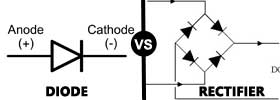Difference between NEFT and ECS
Key Difference: ‘NEFT’ stands for National Electronic Fund Transfer. ‘NEFT’ is associated to an electronic fund transfer system, in which transactions are settled in batches during specific timings. ‘ECS’ stands for Electronic Clearing Service. It is a mode of electronic funds transfer in which bulk transfers take place from one account to the other. The bulk transfer usually contains low value transactions.
We often need to transfer the funds from one account to the other. The advent of new technologies had made the task very easy. Looking at the back, one can easily remember a long queue of people in bank for various purposes. NEFT and ECS refer to such important services that are provided by the advancing banking sector. Both these terms can be easily compared by comparing them in the context of India, where both are applicable and are covered under electronic methods of payment. Therefore, the following article will bring out the differences between these two terms in context to payment methods used in India.
.jpg) ‘NEFT’ stands for National Electronic Fund Transfer. NEFT enables the individuals or institutions to electronically transfer the funds from any bank branch to any individual or institutions that may have an account in any other bank branch in the country participating in the Scheme. This system was launched in November 2005 in India. In India, Reserve Bank of India ordered all banks of India to migrate to NEFT by mid December 2005.
‘NEFT’ stands for National Electronic Fund Transfer. NEFT enables the individuals or institutions to electronically transfer the funds from any bank branch to any individual or institutions that may have an account in any other bank branch in the country participating in the Scheme. This system was launched in November 2005 in India. In India, Reserve Bank of India ordered all banks of India to migrate to NEFT by mid December 2005.
A bank branch must be NEFT-enabled to use the NEFT funds transfer network. Individuals or institutions which maintain accounts with a bank branch are eligible for using NEFT. Even such individuals who do not have a bank account can also deposit cash at the NEFT-enabled branches with instructions to transfer funds using NEFT.
‘ECS’ stands for Electronic Clearing Service. This service is used for bulk and repetitive transfers from one account to the other. The ECS uses services of a clearing house. The bulk transfer usually contains low value transactions. It is generally divided into two categories: ECS Debit and ECS Credit. ECS transactions are settled locally in the current accounts maintained with the bank that manages the clearing house. It involves the payment or receipt for transactions that are repetitive and occurs periodically. It is often used for making payments such as distribution of dividend interest, salary, pension, etc. In India Electronic Clearing Service was introduced by Reserve Bank of India. The two variants of ECS are present- ECS Credit and ECS Debit.
1. ECS Credit: It is used by the users to make payments to a large number of customers. The users are generally corporate body institutions that want to make payments to customers or the investors. The user sends the payment data to its banker or sponsor bank. The sponsor bank presents the data to local Clearing House (managed by Reserve Bank of India).
customers or the investors. The user sends the payment data to its banker or sponsor bank. The sponsor bank presents the data to local Clearing House (managed by Reserve Bank of India).
After the clearance, the clearing house debit the sponsor bank’s account and credit the accounts of the bank of the beneficiaries. Later, clearing house processes the data and work out an inter-bank funds settlement. A branch wise credit report is then sent by the clearing house to their service branches of destination banks and then via service branches, the concerned branches of beneficiaries’ bank will credit the account and that too on the appointed date.
2. ECS Debit: This service has been introduced for providing the banks or institutions a fast and effective mode of receiving payments that are periodic and repetitive in occurrence.
Advantages of ECS Debit to customers:
1. ECS Debit mandates will take care of automatic debit to customer accounts on the due dates without bothering customers to visit bank or any centre.
2. Customers are not worried about the due dates for payments.
3. Debits to customer accounts can be monitored by the ECS Users, and the customers are alerted accordingly.
4. Cost effective.
Settlement in ECS can be explained as: The entity making the payment submits the payment instruction through its sponsor bank. Suppose on day T, the instructions are processed at the clearing house and passed on to the beneficiary bank. If the beneficiary bank cannot credit the customer due to any reason, then the instructions are returned. A separate return clearing is held and then the final settlement is completed on T+1 day.
|
|
NEFT |
ECS |
|
Definition |
Is an electronic fund transfer system between banks using the Structured Financial Messaging solution |
Is an electronic fund transfer for large volume transfers of small value transactions |
|
Characteristic |
Bulk low value retail transactions |
large volume transfers of small value transactions |
|
Branches |
More than 47,000 |
More than 60 locations covered |
|
Processing time |
Up to 24 hours |
Generally few days |
|
Charges |
For transactions up to Rs 1 lakh – not exceeding Rs 5 (+ Service Tax) For transactions above Rs 1 lakh and up to Rs 2 lakhs – not exceeding Rs 15 (+ Service Tax) For transactions above Rs 2 lakhs – not exceeding Rs 25 (+ Service Tax) |
Individuals are not charged for the ECS facility, but institutions are
|
Image Courtesy: hastibank.org, rediff.com









Add new comment